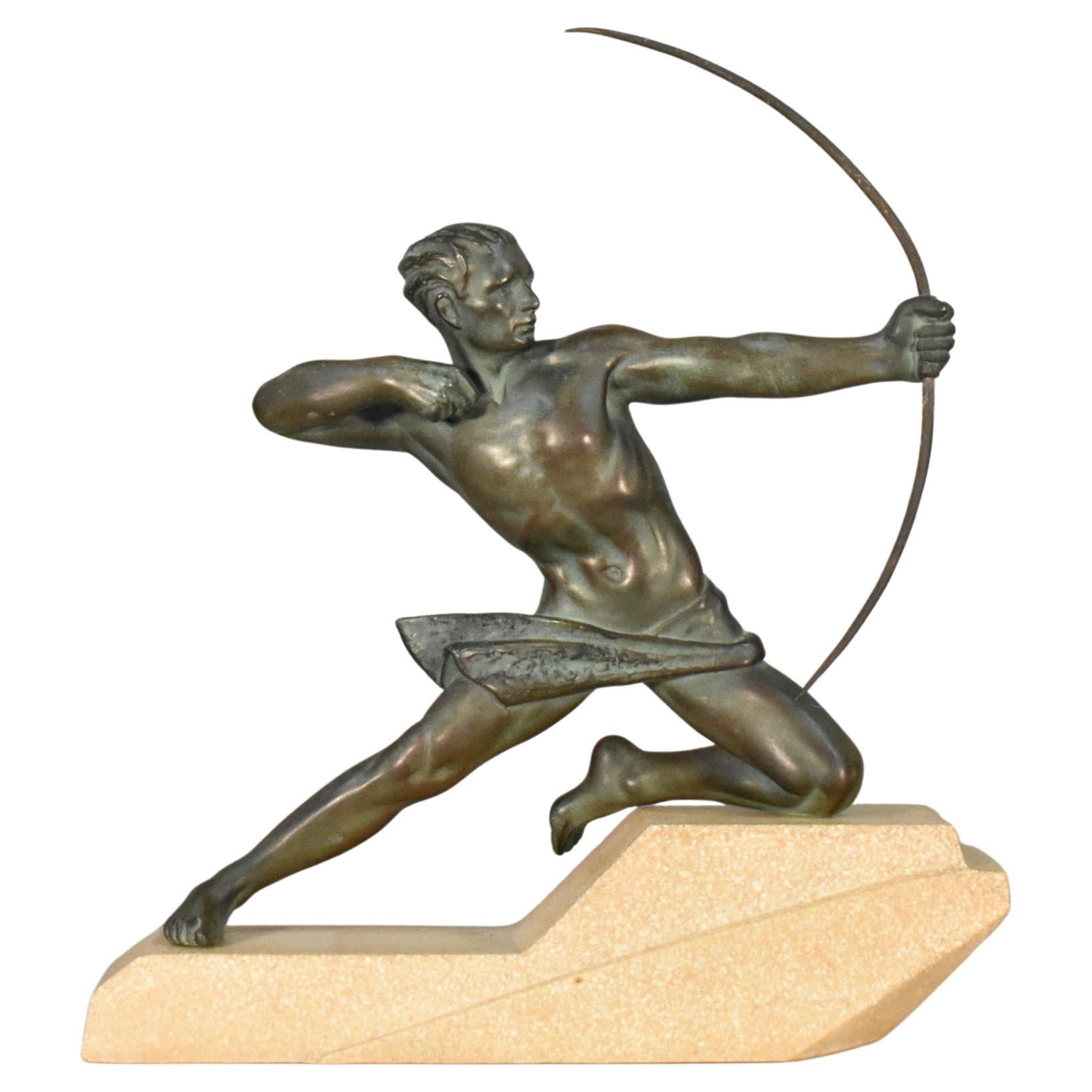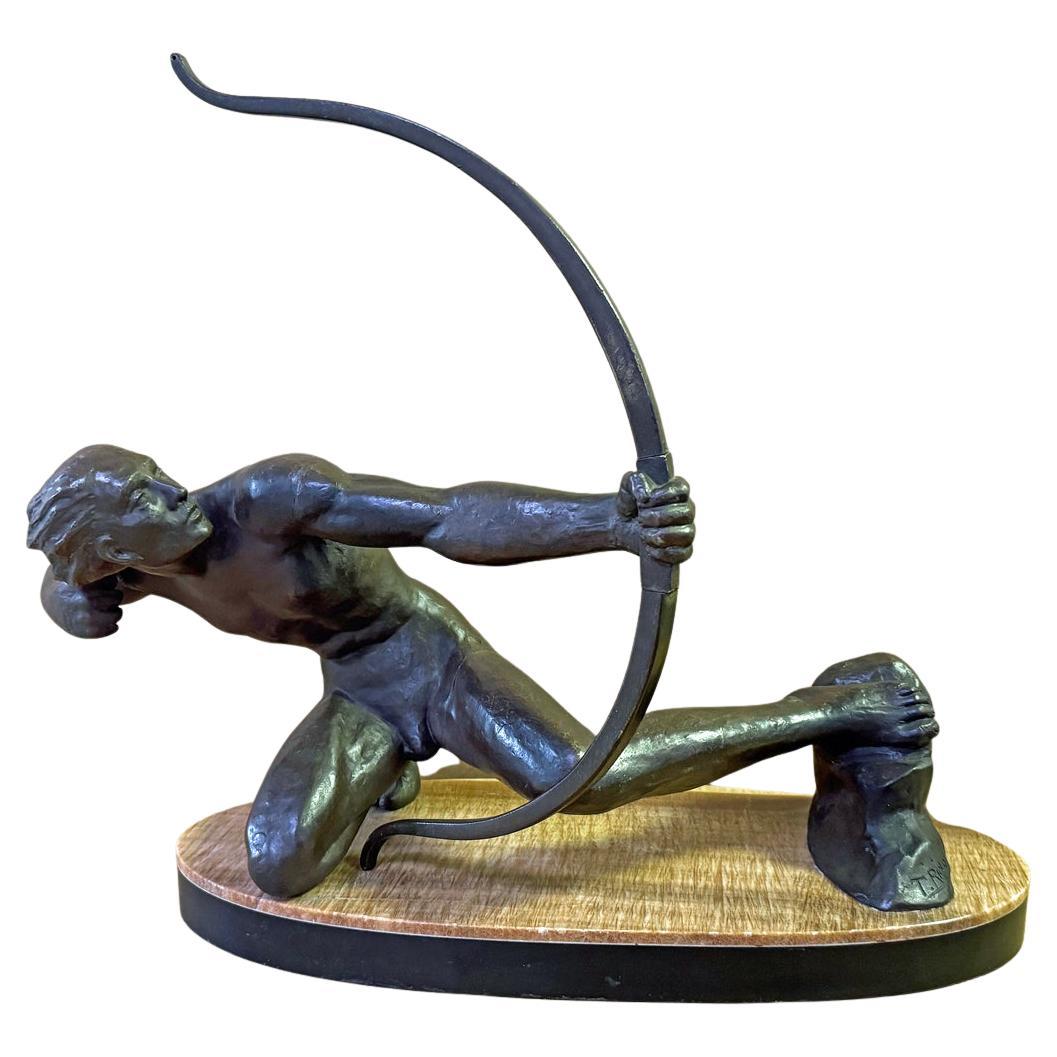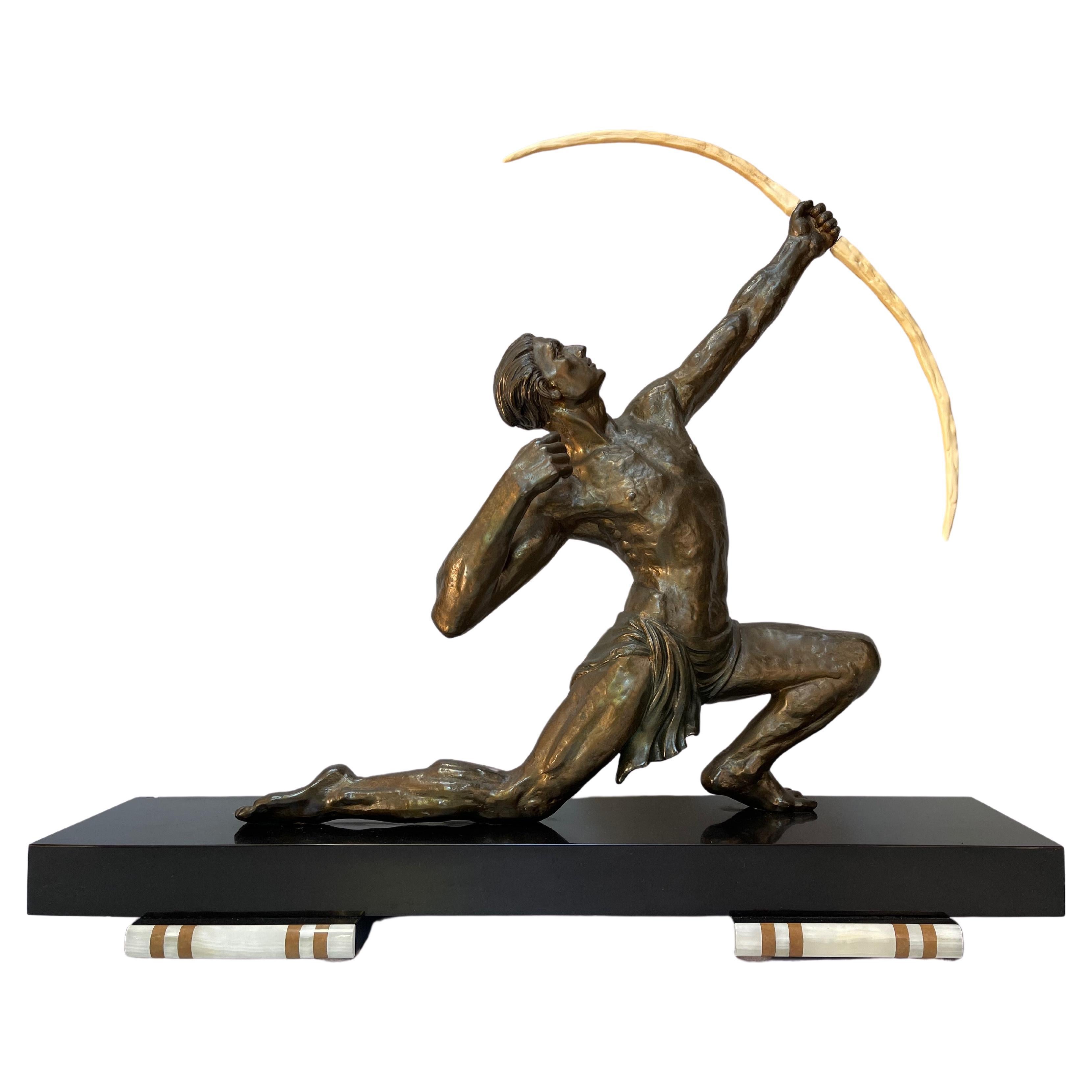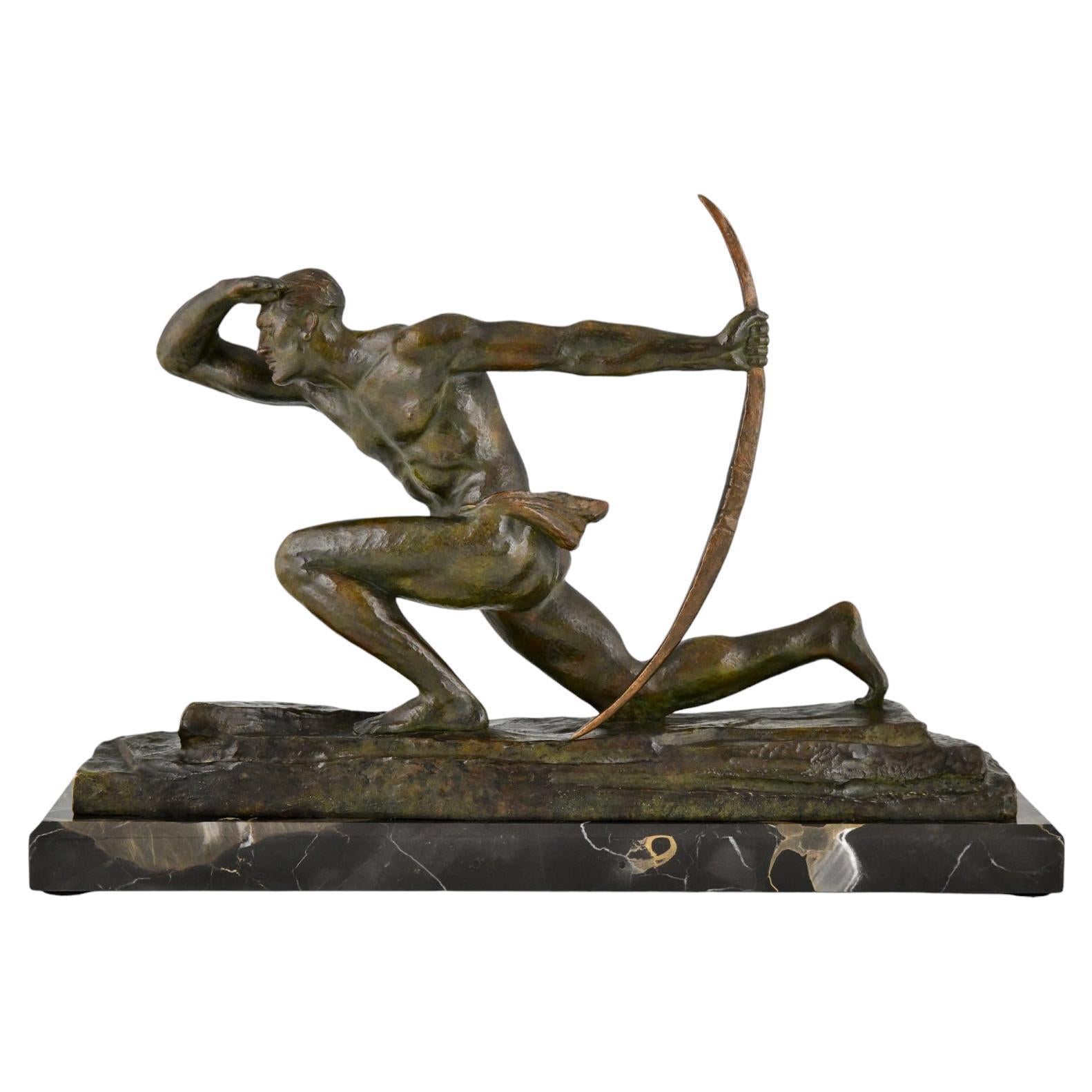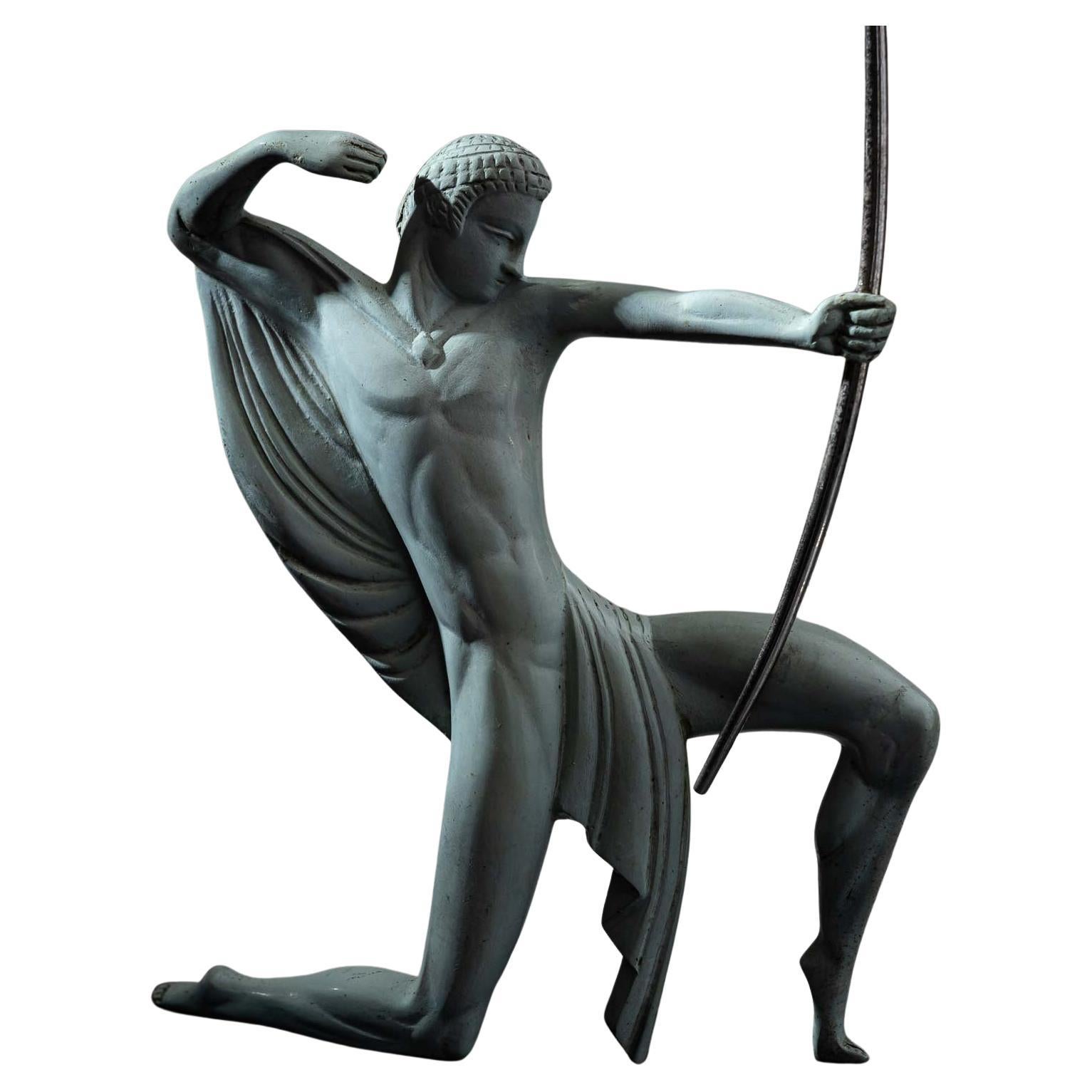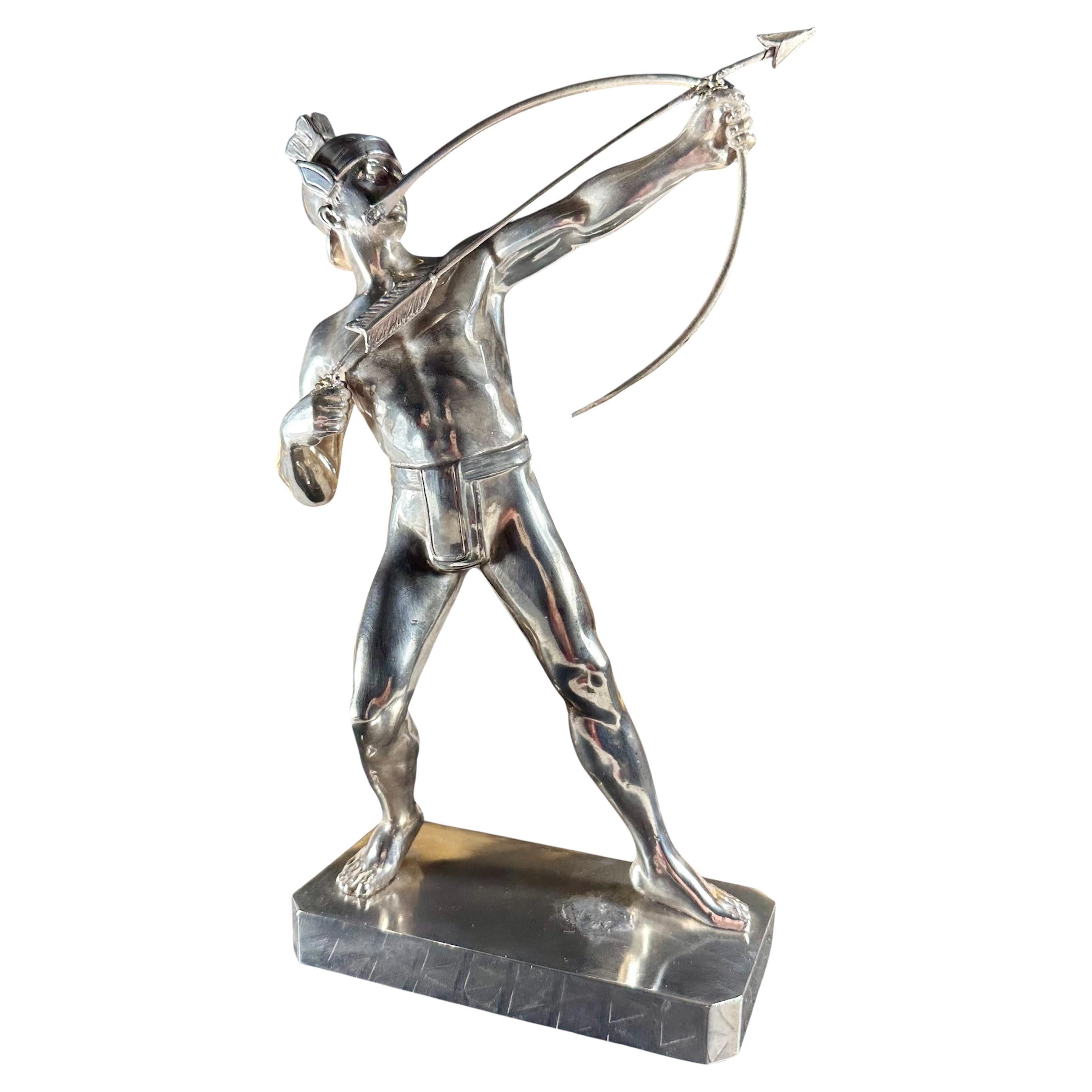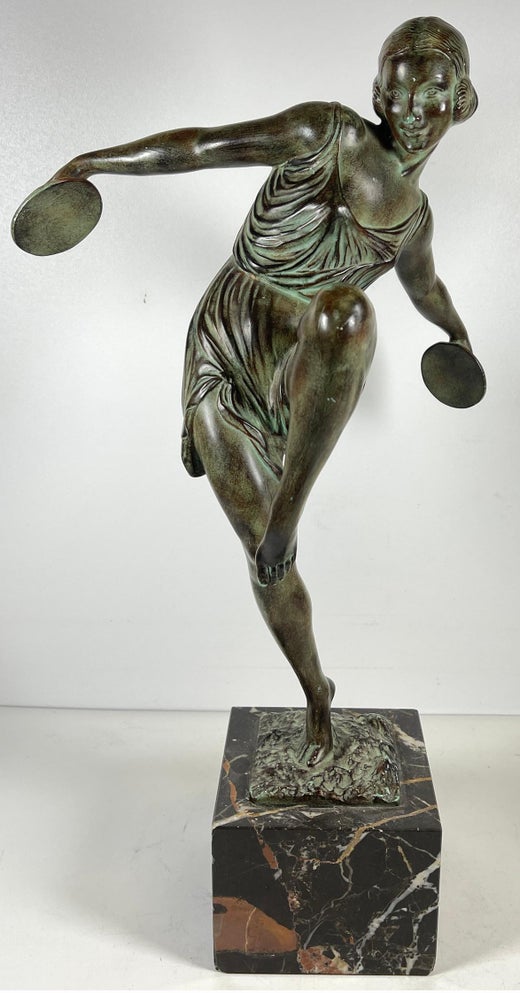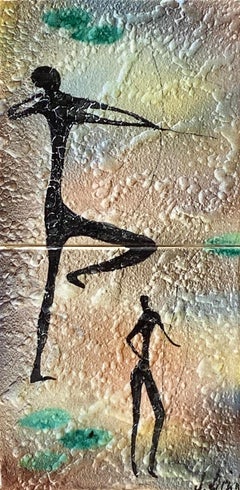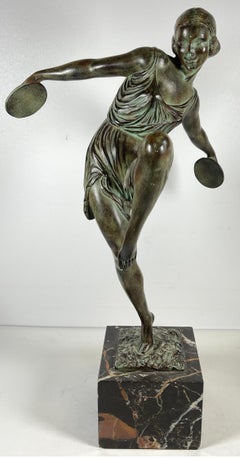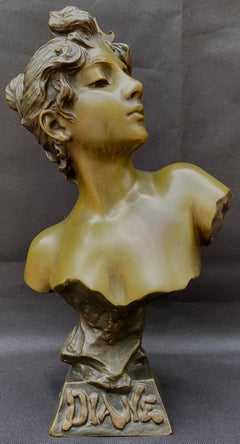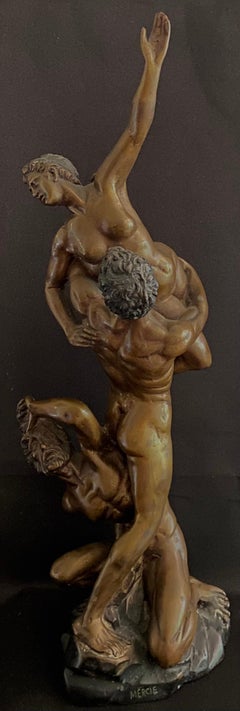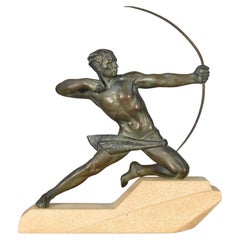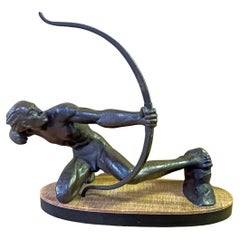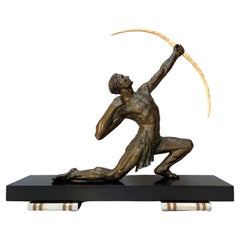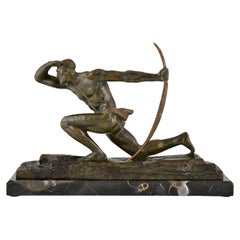Pierre Le Faguays“The Archer”Circa 1930
Circa 1930
About the Item
- Creator:Pierre Le Faguays (1892 - 1962, French)
- Creation Year:Circa 1930
- Dimensions:Height: 11 in (27.94 cm)Width: 16.75 in (42.55 cm)Depth: 3.75 in (9.53 cm)
- Medium:
- Movement & Style:
- Period:
- Condition:Slight wear to verde green patina finish. consistent with its age.
- Gallery Location:Southampton, NY
- Reference Number:1stDibs: LU1419640542
Pierre Le Faguays
Pierre Le Faguays was a master at capturing the minute details of the female form in motion. His exceptional Art Deco style transcended sculptures with stunning table lamps, desk accessories and home accents. Le Faguays’s quality is remarkable, and his distinctive pieces are rare, making his works of art highly collectible.
Born in 1892, in Rezé, France, Le Faguays received formal training both in Paris and Switzerland. In Geneva, he met Marcel Bouraine and Max Le Verrier. The three remained lifelong friends, and together founded the Le Verrier foundry, which produced many of Le Faguays’s pieces. Le Faguays was a member of several artist groups, including La Stele, Evolution and the Salon, and designed many pieces for Goldscheider under the La Stele label.
Not all of Le Faguays’s pieces have a stamp with his name. Le Faguays used two other pseudonyms, Raymond Guerbe and Fayral, the family names of his wife and mother. While the name stamps differ, the style remains the same. Le Faguays used a range of media, such as spelter, stone, wood, alabaster, ceramics, terracotta, pâte de verre, zinc and wrought iron. His most popular items were portrayals of dancers sculpted in ivory and bronze.
Le Faguays was recognized with numerous awards and exhibitions. His works were on display at Le Salon d’Automne in 1920 and the Salon of French Artists in 1922. In 1925, Arthur Goldscheider’s pavilion showed his work at the International Exhibition of Modern Decorative and Industrial Arts. In 1927, he received the French Medal of Honor and an honorable mention at Le Salon des Artistes Français. In 1937, the Exposition Internationale in Paris exhibited his work. He was a member of the Legion of Honor and the Order of Leopold.
On 1stDibs, find a collection of Pierre Le Faguays decorative objects, lighting, collectibles and more.
- ShippingRetrieving quote...Shipping from: Sarasota, FL
- Return Policy
More From This Seller
View All1960s Post-Modern Mixed Media
Ceramic, Wood
1930s Art Deco Figurative Sculptures
Metal
1880s Academic Figurative Sculptures
Bronze
1880s Academic Figurative Sculptures
Bronze
1830s Art Deco Nude Sculptures
Bronze
1890s Academic Figurative Sculptures
Bronze
You May Also Like
Early 20th Century French Art Deco Figurative Sculptures
Stone, Bronze, Spelter
Vintage 1920s French Art Deco Figurative Sculptures
Bronze
Mid-20th Century French Art Deco Figurative Sculptures
Marble, Spelter
Vintage 1930s French Art Deco Figurative Sculptures
Marble, Bronze
Early 20th Century French Figurative Sculptures
Bronze
Early 20th Century Art Deco Figurative Sculptures
Metal, Silver Plate
